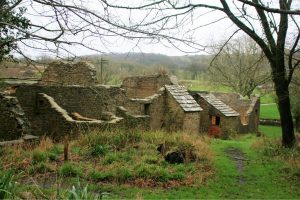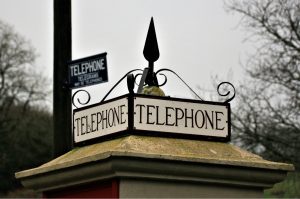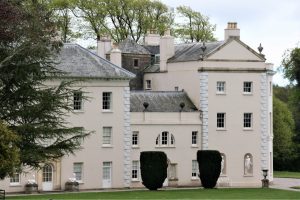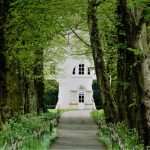Before 1943, Tyneham was a simple working village with farming and fishing being the main industries/sources of livelihood. Then Churchill commandeered the village and land for a tank firing range ahead of D-Day the following year. 228 Residents were given one month’s notice to leave. One of the final members to leave attached a note to the church door saying, ‘Thank you for treating the village kindly’.
They never returned.
The villagers were promised they could return after the war but, sadly, another war followed and as a result it remained as a firing range to this day.
This is another perspective of all those sacrifices made during the wars and particularly the Second World war. Think of your home. Then, imagine being told you had to give up your home…. many of the residents didn’t own these houses and as a result were only compensated for the vegetables in their gardens. It is true that the village was in decline (the school had already closed down due to lack of numbers) with the fishing and farming industry lost to modern advancements and bigger towns nearby. Perhaps it could be argued that Churchill put the village out of its misery, but it was still home to some people and who knows for how many generations.

70 and more years on don’t be blinkered into thinking that this is a tourist hotspot – it is not. Visiting here is quite eerie. It’s like time has been frozen. Bylaws prevent the sale of any goods or development as an attraction (there are so many more places that could benefit from this type of law!!). Before reading the superb boards that tell of the history of Tyneham one might easily think that it resembles a bomb site and not a place deserted and almost lost to the ravages of time. The roofless buildings look like they were blown off by bombs rather than, perhaps, blown off after years of wild British weather. The frames of the houses still stand strongly, proudly giving a backward glimpse into the lives of the long-departed community. The only buildings still recognisable are the church and school for both have received some tender loving care. This is a true ghost town which stands as a memorial to the sacrifice made by a village to train personnel in order to accelerate the end of the war. A lonely red phone box stands in front of a cable less pylon, perhaps begging for a buyer – what an iconic symbol of modern times.

Tyneham is located in a beautiful valley that is untouched and unspoilt by modernisation, rich in wildlife and provides access to Worbarrow Bay in Dorset. It is a long time since I made a brief visit here, but perhaps another, lengthier visit is in order. It is isolated close to the coast and it provides a tranquil haven from the well-trodden tourist path.
As I leave, I appreciate my home and think of the sacrifices of many, and also consider whether to write about such a place for fear that this place no longer remains hidden from the masses!!! As I write it is a long way from the modern, instant internet/insta fame that destroys the beauty of many a historic spot. Thank God for bylaws and long may it stay that way.
East Lulworth, England, United Kingdom


 My latest
My latest 
 blue bells awash the ground like an artist’s pallet. Add to this the grass and weeds that can’t be touched so as not to ruin the spring flowers. Having read the signs and notices I didn’t jump in to get my picture, unlike the kid on a school visit. The walk along the tree path is a tunnel of green as the trees take full bloom now spring is in full swing.
blue bells awash the ground like an artist’s pallet. Add to this the grass and weeds that can’t be touched so as not to ruin the spring flowers. Having read the signs and notices I didn’t jump in to get my picture, unlike the kid on a school visit. The walk along the tree path is a tunnel of green as the trees take full bloom now spring is in full swing.